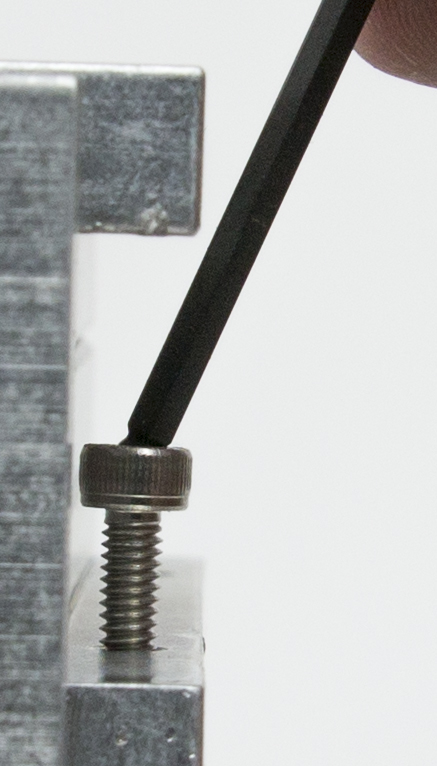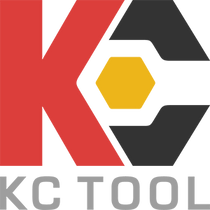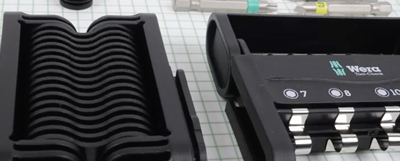Ball-End Hex Tools: A Guide
Posted by Collin on Apr 20th 2023
Hex Key, Allen Wrench, L-Key, no matter what name you call it, if you have ever assembled anything you have probably used one. You can get them in Metric or SAE and they come in all kinds of sizes, from the tiny .028 inch to massive one inch. They are commonly used for furniture assembly because they are cheap to manufacture and can be tossed in the box for the customer to use (evidently they are like paperclips at IKEA and they will give you one if you ask nicely).
 We have grown so accustomed to getting free L-keys in our furniture boxes that we take for granted the inferior quality of them and are very likely just to throw the tool away with the plastic bag it came in when we’re done. As any reader of this blog should know though, we buy good quality tools and demand only the best, so why use that freebie in the first place? A good set of L-keys will last you decades without showing wear and tear. But there is one big advantage to buying a quality set of L-keys and that’s the ball end.
We have grown so accustomed to getting free L-keys in our furniture boxes that we take for granted the inferior quality of them and are very likely just to throw the tool away with the plastic bag it came in when we’re done. As any reader of this blog should know though, we buy good quality tools and demand only the best, so why use that freebie in the first place? A good set of L-keys will last you decades without showing wear and tear. But there is one big advantage to buying a quality set of L-keys and that’s the ball end.
There are many well-made sets of L-keys that have the standard straight hex end, but if you are buying the set for life you should strongly consider spending a few extra bucks and get ball-end hex keys. The advantages are simple, but before we get there, a little history.
Various documents suggest that somewhere in the 1800s the hexagonal screw head was theorized about but never produced. Though he may not have been the first person to produce them, William G. Allen of Allen Manufacturing Company was the first to patent the process of forming screw heads around a die in 1910. Therefore, many people call it an Allen Wrench, much like many people call a tissue a Kleenex. The Allen name is a registered trademark however, so the term hex key or L-key is the generalized version.
In 1964, John Bondhus of the Bondhus corporation invented what they trademark as the Balldriver hex key. It was a simple thought, really. What if the end of the hex driver was manufactured to a ball shape so that the hex shape can be inserted at an angle? The idea took off and today ball-end hex keys are made by several manufacturers, including our much-loved German Brands.
So what is the advantage? It comes down to flexibility. A standard L-key can’t always fit into tight spots and definitely can’t be turned at an angle. That’s where the ball comes in. Because of its shape, the ball-end hex can be inserted into the fastener from (typically) up to a 25-degree angle. This means you can adjust to the fastener and not have the fastener adjust to your tool (which typically doesn’t work out so well). Don’t go crazy though, as nothing can beat the tight fit of a straight hex directly into the screw. You will notice that many of the brands put the ball on only one end for this very reason.

 We have grown so accustomed to getting free L-keys in our furniture boxes that we take for granted the inferior quality of them and are very likely just to throw the tool away with the plastic bag it came in when we’re done. As any reader of this blog should know though, we buy good quality tools and demand only the best, so why use that freebie in the first place? A good set of L-keys will last you decades without showing wear and tear. But there is one big advantage to buying a quality set of L-keys and that’s the ball end.
We have grown so accustomed to getting free L-keys in our furniture boxes that we take for granted the inferior quality of them and are very likely just to throw the tool away with the plastic bag it came in when we’re done. As any reader of this blog should know though, we buy good quality tools and demand only the best, so why use that freebie in the first place? A good set of L-keys will last you decades without showing wear and tear. But there is one big advantage to buying a quality set of L-keys and that’s the ball end.There are many well-made sets of L-keys that have the standard straight hex end, but if you are buying the set for life you should strongly consider spending a few extra bucks and get ball-end hex keys. The advantages are simple, but before we get there, a little history.
Various documents suggest that somewhere in the 1800s the hexagonal screw head was theorized about but never produced. Though he may not have been the first person to produce them, William G. Allen of Allen Manufacturing Company was the first to patent the process of forming screw heads around a die in 1910. Therefore, many people call it an Allen Wrench, much like many people call a tissue a Kleenex. The Allen name is a registered trademark however, so the term hex key or L-key is the generalized version.
In 1964, John Bondhus of the Bondhus corporation invented what they trademark as the Balldriver hex key. It was a simple thought, really. What if the end of the hex driver was manufactured to a ball shape so that the hex shape can be inserted at an angle? The idea took off and today ball-end hex keys are made by several manufacturers, including our much-loved German Brands.
So what is the advantage? It comes down to flexibility. A standard L-key can’t always fit into tight spots and definitely can’t be turned at an angle. That’s where the ball comes in. Because of its shape, the ball-end hex can be inserted into the fastener from (typically) up to a 25-degree angle. This means you can adjust to the fastener and not have the fastener adjust to your tool (which typically doesn’t work out so well). Don’t go crazy though, as nothing can beat the tight fit of a straight hex directly into the screw. You will notice that many of the brands put the ball on only one end for this very reason.


 Tool of the Day™
Tool of the Day™
 Essentials
Essentials
 The Seasonal
The Seasonal
 New Arrivals
New Arrivals
 Staff Picks
Staff Picks
 Sale
Sale
 Clearance
Clearance
 Wera
Wera
 Knipex
Knipex
 Hazet
Hazet
 Stabila
Stabila
 Felo
Felo
 NWS
NWS
 Heyco
Heyco
 Bits & Accessories
Bits & Accessories
 Cutters & Pincers
Cutters & Pincers
 Pliers
Pliers
 Ratchets & Sockets
Ratchets & Sockets
 Screwdrivers
Screwdrivers
 Wrenches
Wrenches